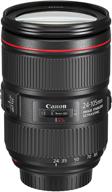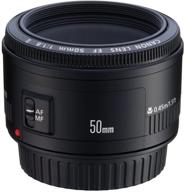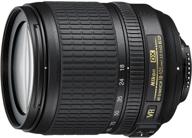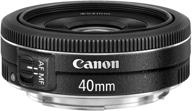
Review on Nikon 24-120mm f/4G ED Vibration Reduction Zoom Lens with Auto Focus - AF-S FX NIKKOR for Nikon DSLR Cameras by Agung Rusindarto ᠌

Everything in the product suited me, the price is generally perfect.
I had a choice of what to take with me on my upcoming skiing trip. I settled on this 24-120 mm f/4 G ED VR AF-S Nikkor lens as my main all-round lens. I used it in conjunction with a Nikkor AF-S 70-300 f / 4.5-5.6 VR telezoom lens for specialized shooting of skiers from a remote distance. The AF-S Nikkor 24-70 f / 2.8 G ED lens is less convenient on a trip, as it does not overlap the telezoom lens with a margin in focal lengths, plus it is even larger and heavier, although the image quality may be slightly superior to Nikon 24-120mm f/4G ED VR AF-S Nikkor. Then I can put only one lens at a time in the chest case due to the overall dimensions. (I used to carry two smaller compact zoom lenses 28-105 f / 3.5-4.5 and 100-300 f / 4.5-5.6 in one bag on a Minolta Dynax 9 film camera). The Nikon 24-120mm f / 4G ED VR AF-S Nikkor I chose during the trip completely suited me. I was also considering the option of purchasing the Nikkor AF-S 28-300 f / 3.5-5.6 wide-purpose lens, but I was confused by this large range of focal lengths, and when setting the focal length in the range from 120 mm to 300 mm, this lens had the actual aperture is only 5.6 (it was already getting quite dark). At a wide angle, everything starts with only 28 mm, and sometimes a wider-angle version with a focus of 24 mm (according to the experience of previous trips) is required when shooting architecture in rather narrow streets in an Austrian ski resort, and the view panorama in the mountains can be shot more interesting. In a word, I did not regret that I took two lenses with me on a trip. Telezoom 70 - 300 filmed skiers in motion, and everything else was filmed with a universal lens 24 - 120 mm.
- A very convenient zoom lens in the range of focal lengths when using it on trips as an all-purpose lens. At full frame, FX spans from wide-angle to mid-range telephoto. VR works well for image stabilization. Excellent picture over the entire range of focal lengths (works softer in the tele-range). If you try to make very large magnifications, then you need to use not a universal zoom lens, but professional lenses with fixed focal lengths. On DX cameras with a 1.5 crop matrix, it can also be successfully used, for example, for sports photography of skiers passing at a short distance, when some approximation of the subject is needed. When used on the Nikon D800, you can switch to shooting in DX format, thereby increasing the range of focal lengths with the equivalent of up to 180 mm. It quickly focuses on sharpness, I don’t know how others have complaints about autofocus. I used it to shoot landscape views from a train car in the Swiss Alps, moving at a speed of 120 - 130 km / h. Plus, the glass in the car was not very clean, but the pictures turned out good.
- I would like to have a lighter and more compact universal lens when traveling, this one is a bit heavy and has a filter diameter of 77 mm and is quite large. But with a constant aperture of 4, it will be the best option, in relation to other zoom lenses with a drop in aperture in the tele range. Perhaps the price is a bit expensive, but here you can not get a good lens for little money. I thought about purchasing an alternative version of the Nikkor AF-S 24-85 mm f / 3.5-4.5 lens, smaller in size and much better in price, but I came to the conclusion that a more expensive lens with extension of the range of focal lengths up to 120 mm. I also didn’t really like the pale one during filming, it protects at a focus of 24 mm, and is of little use in the TV range. It is inconvenient to put the lens in a wardrobe trunk along with the installed pale one. Therefore, it has to be constantly put on and off. When shooting quickly in extreme winter weather conditions (on mountain skis), this manipulation is annoying, so I often shot without a lens hood at all, although I used it regularly when shooting leisurely in the park and on the streets of the city. Without a professional chest case with a shoulder suspension through the back, it is not convenient to carry the lens around the neck, it is burdensome. Therefore, for beginners, hanging one camera on a belt without a wardrobe trunk will not be the best option, especially on a leisurely walk while driving to the shooting location. In a word, a more professional approach to carrying the camera is needed to use this lens.
New products
Comments (0)
Top products in 👓 Lenses

Black Canon EF 24-105mm f/4L IS II USM Lens - Model 1380C002

78 Review

Canon EF 50mm f/1.8 II Fixed Lens - Discontinued by Manufacturer

93 Review

New Nikon 18-105mm Vibration Reduction 📷 Zoom Lens with Auto Focus for Nikon DSLRs

104 Review

Canon EF 40mm f/2.8 STM Lens - Fixed Black (6310B002) for US Cameras

76 Review





